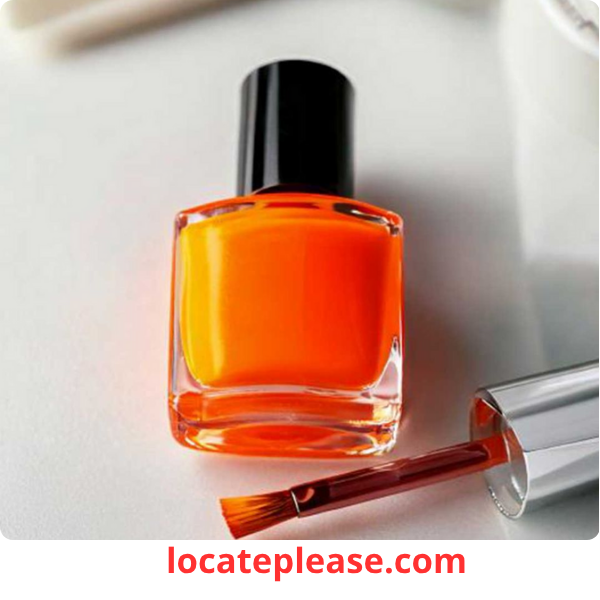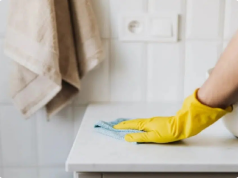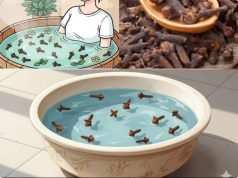In recent months, a disturbing new trend has surged among teenagers — not in the form of a dance challenge or fashion statement, but as a dangerous and potentially deadly act known as “chroming.”
It’s happening in backyards, bathrooms, and bedrooms.
It’s being filmed, shared, and even glorified on social media.
And most parents don’t even know it exists — until it’s too late.
What Is Chroming?
Chroming is a form of inhalant abuse where teens intentionally inhale the fumes of aerosol products — such as spray paint, deodorants, hair sprays, or air fresheners — to achieve a quick, intoxicating high.
The term originated from chrome spray paint, but today it includes any aerosol-based product that releases volatile chemicals when sprayed.
Teens typically:
- Spray the substance into a bag or cloth
- Hold it over their nose and mouth
- Breathe in deeply to feel the effects within seconds
The high is intense but short-lived — lasting just a few minutes — which often leads to repeated use in a single session.
Why Is It So Dangerous?
Unlike alcohol or drugs, these household items are easily accessible, cheap, and legal — making them dangerously appealing to curious teens.
But the risks are severe — and can be instantly fatal.
Immediate Dangers:
- Sudden Sniffing Death Syndrome (SSDS): A single session can trigger cardiac arrest, even in healthy teens. The chemicals disrupt heart rhythms — sometimes with the very first use.
- Asphyxiation: Inhaling fumes in enclosed spaces can displace oxygen, leading to suffocation.
- Seizures, nausea, dizziness, and loss of consciousness
- Chemical burns to the nose, throat, and lungs
Long-Term Effects:
- Brain damage — memory loss, impaired coordination, cognitive decline
- Liver and kidney damage
- Hearing and vision loss
- Permanent nerve damage
- Addiction and dependency
One study by the National Institute on Drug Abuse (NIDA) found that inhalants are among the most deadly substances teens misuse — with irreversible consequences that can begin after just a few uses.
How Did This Trend Go Viral?
Social media is fueling the fire.
On platforms like TikTok, Instagram, and YouTube, videos show teens laughing, staggering, or passing out after inhaling fumes — often tagged with hashtags like #chroming or #highoffthis.
These clips are misleadingly framed as “funny” or “harmless pranks” — with little to no warning about the risks.
- The anonymity of online sharing hides the real consequences
- Peer pressure and the desire for likes push teens to try it
- Many don’t realize they’re playing with life and death
And because these products are not labeled as drugs, teens — and even some parents — don’t recognize them as dangerous.
Warning Signs Parents Should Watch For
Chroming can be hard to detect — but there are red flags:
Behavioral Signs:
- Sudden mood swings or irritability
- Slurred speech or poor coordination
- Unexplained laughter or dizziness
- Secretive behavior, especially in bathrooms or garages
Physical Signs:
- Chemical smell on breath or clothes
- Paint stains on hands, face, or clothing
- Red or runny nose, nosebleeds, or sores around the mouth
- Empty aerosol cans hidden in backpacks, drawers, or trash
Environmental Clues:
- Missing spray cans
- Plastic bags or rags with strong odors
- Increased online activity around inhalant use
How to Talk to Your Teen About Chroming
Approach the conversation with calm, concern, and facts — not fear or anger.
✅ Educate, don’t accuse:
“Have you heard about teens inhaling spray paint to get high? I just learned how dangerous it can be — I wanted to share this with you.”
✅ Explain the real risks:
Use clear examples: “Some teens have died from doing this just once. It’s not like other drugs — it can stop your heart instantly.”
✅ Listen without judgment:
Ask: “What do your friends think about this? Have you seen it online?”
Let them talk. Understanding their world builds trust.
✅ Talk about peer pressure and social media:
“Just because it’s on TikTok doesn’t mean it’s safe. A lot of those videos don’t show what happens afterward.”
How to Prevent Chroming at Home
You can’t monitor your teen every second — but you can take steps to protect them.
1. Secure Household Products
- Store aerosol cans in a locked cabinet
- Monitor usage of spray paint, air fresheners, and cleaning sprays
- Dispose of empty cans properly
2. Educate Early
- Teach kids about inhalant dangers as early as middle school
- Use real-life stories or school programs to drive the message home
3. Encourage Healthy Alternatives
- Support sports, arts, or clubs that build confidence and connection
- Help your teen manage stress in healthy ways — mindfulness, exercise, talking to a counselor
4. Monitor Online Activity
- Know what your teen is watching and who they’re following
- Use parental controls if needed, but prioritize open communication
Resources for Help & Support
If you suspect your teen is using inhalants, act now. Early intervention saves lives.
- National Inhalant Prevention Coalition (NIPC) – www.inhalants.org
- SAMHSA National Helpline (U.S.) – 1-800-662-HELP (4357) – Free, confidential, 24/7
- National Institute on Drug Abuse (NIDA) – Educational resources for parents and schools
- Local counselors or substance abuse programs – Many offer teen-specific therapy and support groups
Final Thoughts: This Isn’t Just a Phase — It’s a Crisis
Chroming isn’t a joke.
It’s not a trend that will “blow over.”
It’s a silent epidemic — hidden in plain sight, spreading through screens and peer groups.
As a parent, you may feel powerless.
But knowledge is power.
By talking early, staying alert, and being present, you can protect your child from a danger they may not even realize exists.
Because no social media like, no momentary high, is worth a life.
If this article saves just one teen from chroming… it’s worth sharing.










